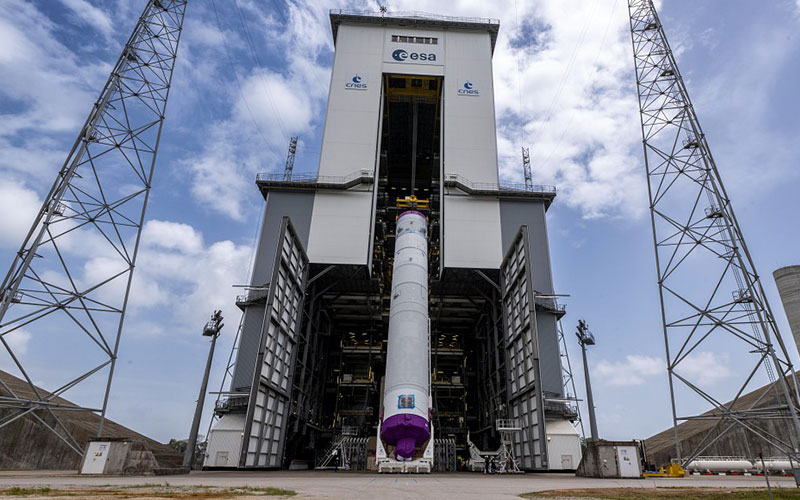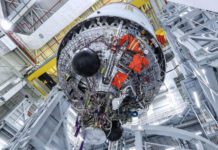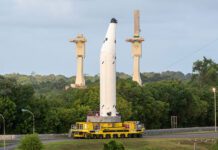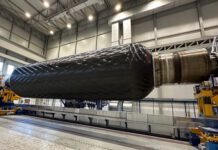
The integrated core and second stage of the first Ariane 6 rocket has been lifted to the vertical position atop the ELA-4 launch table in French Guiana.
On 24 April, the integrated central core of the first Ariane 6 rocket made the 800-metre journey from the assembly building to the ELA-4 launch pad at the Guiana Space Centre. It was then raised into the vertical position and placed on the launch table. Finally, it was rotated to align its fluid connections with the launch pad’s umbilicals, which will be used to fill the rocket’s liquid hydrogen and liquid oxygen tanks in preparation for launch.
The mobile building that surrounds Ariane 6 during integration stands at 90 meters tall. In preparation for a launch, the entire structure is rolled away on rails, giving the rocket a clear view of the sky.
For its maiden flight, Ariane 6 will be launched in its 62 configuration, which includes the use of two P120C boosters. In this configuration, the rocket has a launch mass of around 540,000 kilograms and is capable of carrying payloads of up to 10,300 kilograms to low Earth orbit.
A total of 18 passengers will be launched aboard the maiden flight of Ariane 6, including small satellites, deployers, experiments, and a pair of reentry vehicles. The first payload separation will occur one hour and six minutes into the flight. The second and third separation will occur three and nine seconds after the first. Following an APU boost and a third and final Vinci boost, the two return capsule will be deployed two hours and forty minutes into the flight. The mission will come to a conclusion just shy of three hours after liftoff, with the rocket’s upper stage reentering the atmosphere on a destruction trajectory.







